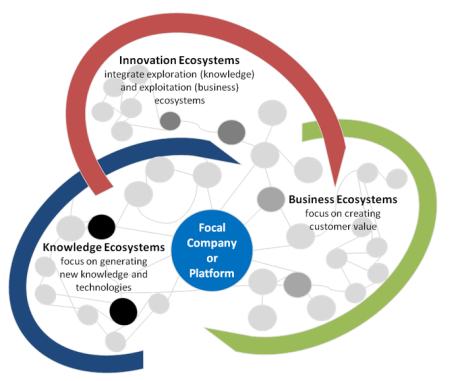
Credit Katri Valkokari
I wrote a post “the Interconnected Parts of the Ecosystem” earlier this year, after a paper written by Katri Valkokari, a Research Manager at VTT Technical Research Centre of Finland caught my eye. I wanted to come back to this really powerful visual, recognizing the three interrelated ecosystems we require to form around. I mentioned in my post, these three parts actually do fuse into one, making up an integrated ecosystem of their distinct parts.
It gave me a level of recognition that we do have this need for this three-stage evolution, especially in a business context. Each establishes a boundary of scope and feeds into each other constantly. It is the fact they combine ideas, skills, learning, fresh insights, leading to promising outcomes and creations. It is how they interact and add new value that gives this ‘combination effect’ such potential for us to consider.
The combining of tangible and intangible assets gives us ‘fresh capital’. I have written about Capital and consciously focused upon this, up to know, more under Innovation Capital, as this draws in knowledge through insights and then pushes these out from Knowledge into Organizations as concepts to be explored and exploited, to grow and improve.
Our innovation capital has mostly been internally built to date, yet there is a time and need to take this out with new forms of collaboration, leveraging all the combined assets into a new “collective capital”. This needs reflecting upon, of how you would ‘break this down’, perhaps within this awareness of all these three ecosystems that we do need to consider.
 There seem to be multiple forces at work, ones that are reshaping how organizations are adjusting to a rapidly changing world, to operate within.
There seem to be multiple forces at work, ones that are reshaping how organizations are adjusting to a rapidly changing world, to operate within.